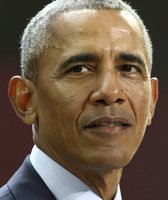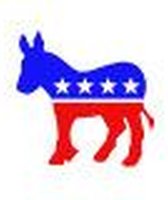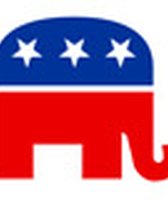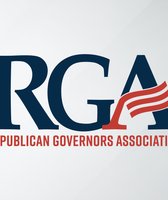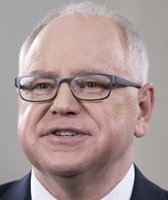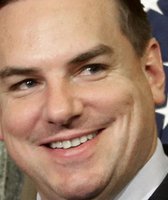Stand up for the facts!
Our only agenda is to publish the truth so you can be an informed participant in democracy.
We need your help.
I would like to contribute
Barack Obama says banks paid back all the federal bailout money
On the campaign trail, President Barack Obama has spoken much more of the bailouts for auto companies than their bank brethren. But, far from Detroit, the president raised the issue of the bank bailouts last week in New Hampshire.
Speaking before a crowd of about 6,000 voters in Manchester, N.H., Obama assured supporters that of all the fiscal issues facing the nation, the bank bailouts are no longer among them.
"We got back every dime used to rescue the banks," he told the crowd gathered Oct. 18 in Victory Park. "We made that happen."
As of this month, four years have passed since federal lawmakers salvaged some of the nations largest banks with the Emergency Economic Stabilization Act of 2008. But, now, the question is, how much of the money has the government received back?
We decided to crunch the numbers.
In past rulings, PolitiFact has looked into statements about the auto industry bailout, and last month, we ruled Mostly False on a claim from former President Bill Clinton’s that the total bailout program has earned a profit. But, Obama’s claim about the bank bailouts, specifically, seemed to be worth a fresh look.
To start, we reached out to the Obama campaign, which directed us first to the U.S. Treasury, which releases daily updates on the Temporary Assets Relief Program.
The Emergency Economic Stabilization Act, which created the TARP, initially offered up to $700 billion to banks, auto companies, insurance agencies and mortgage lenders, among other groups. In 2010, Congress amended the law to limit the spending to $475 billion.
Now, four years later, lawmakers have thus far distributed $466 billion of that total, according to the Treasury, and, of that total, about $370.4 billion has been returned, including $41.9 billion from interest and dividends, among other income sources.
But, of those the totals, the bank payments that the president referenced are only a portion. Of the $466 billion distributed, about $245.2 billion have gone to banks, both national and local. And, as of Oct. 18, the day of the president’s speech, the government had taken back about $266.7 billion, according to the treasury count-- about $21.5 billion more than the initial investment.
"TARP’s bank programs have already earned a significant profit for taxpayers," Matthew Anderson, a Treasury Department spokesman, wrote in an email to PolitiFact NH.
But, that total doesn’t necessarily mean the banks have paid back in full. The treasury report shows that, of the $245.2 billion disbursements, $232.9 been have been repaid. The $33.8 billion difference between the repayments and the total cash collected has come through interest, dividends and other revenue sources.
These numbers differ slightly from those reported by ProPublica, a Pulitzer-winning investigative group, which tracks the federal figures on its Bailout Tracker.
ProPublica, which categorizes the payments differently, reports that banks have returned $223.9 billion, which, along with $31.9 billion collected in interest other revenues, has left the government with a $19.6 billion gain.
But, the point is the same, noted Paul Kiel, who authors the Bailout Tracker.
"Essentially, the treasury has realized a profit on the bank portion of the TARP investments," Kiel wrote last week in an email message.
Those profits could rise even higher. The treasury, which purchased stock from 707 banks, still holds investments in about 280 of them. But, if we expand the definition, as ProPublica does, to include investment agencies and credit card companies, among other financial institutions, more than 400 companies still have debts outstanding with the government, Kiel wrote in a September blog post.
Most of these banks, however, are small institutions who are struggling to stay afloat, Kiel wrote. Of the 400-plus, 162 have fallen behind on their dividend payments to the treasury, he wrote, and, according to a March report by the U.S. Government Accountability Office, 130 banks were included on the government’s list of "problem banks," demonstrating "financial, operational, or managerial weaknesses that threatened their continued financial viability."
"While repayments, dividends, and interest from institutions participating ... have exceeded the program’s original investment disbursements, the number of missed payments has increased over the life of the program," government officials wrote in the GAO report. "Institutions that continue to miss payments and problem institutions may have difficulty ever fully repaying their … investments."
Our ruling:
Not all of the banks who received TARP money have repaid the loans. In fact, 400-plus banks are still on the government’s red list -- more than have completed the payments -- and, according to the GAO, some may never pay the money back.
But, the fact remains, due to interest, dividends and other revenue streams, the government has received more money back ($266.7 billion, according to the Treasury) than it handed out to banks under the bailout law ($245.2 billion). We rate this claim Mostly True.
Our Sources
President Barack Obama, speech in Manchester, N.H., October 18, 2012
U.S. Department of the Treasury, Daily TARP Update, October 18, 2012
ProPublica, Bailout Tracker, October 12, 2012
ProPublica, The Bailout: By the Actual Numbers, September 6, 2012
U.S. Government Accountability Office, Capital Purchase Program: Revenues Have Exceeded Investments, but Concerns about Outstanding Investments Remain, March 8, 2012
E-mail interview with Matthew Anderson, spokesman for the U.S. Department of the Treasury, October 23, 2012
E-mail interview with Paul Kiel, reporter with ProPublica, October 23, 2012
Browse the Truth-O-Meter
More by Jake Berry
Barack Obama says banks paid back all the federal bailout money
Support independent fact-checking.
Become a member!
In a world of wild talk and fake news, help us stand up for the facts.

